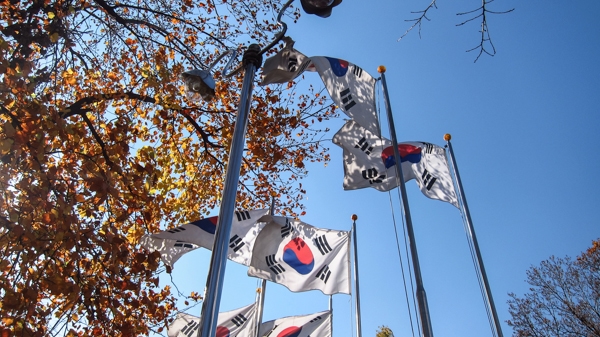
Taegukgi (Korean National Flag), also known as the Flag of South Korea, is an important symbol of the Republic of Korea since it was founded in 1948. The original design of the flag was adopted in 1883.
Before 1880, the idea for a national flag was largely unimportant. The idea of a national flag arose due to foreign negotiations after the United States-Korea Treaty of 1882. In August 1882, Joseon Dynasty politician Park Yeong-hyo created the first model of the new national flag. On January 27, 1883, the government agreed to adopt Taegukgi as the Korean national flag.
Before 1945, the national flag was used throughout the entire Korean peninsula. After World War 2, North Korea adopted their own national flag.
The white background of the flag represents the peace and purity of the land of Korea. The yin and yang at the center represents dualism of nature and opposing forces of the universe. The blue (yin) represents negative cosmic forces including darkness, evil, and death. The red (yang) represents positive cosmic forces including light, goodness, and life.
Surrounding the circle are black bars, known as trigrams, based on Taoism and Confucianism.
The bars in the top left (geon) represent the sky, heaven, spring, justice, and the east. The bars in the lower left (ri) represents the sun, autumn, fire, frution, and the south.
The bars in the top right (gam) represents the moon, winter, water, wisdom, and the north. The bars in the bottom right represents the earth, summer, mother, vitality, and the west.
At the center of Yongsan Family Park is Taegukgi (National Flag) Park, a park within a park that features 50 flags that wave in the wind for the purpose of evoking Korean patriotism.
Last Updated on Feb 28, 2024